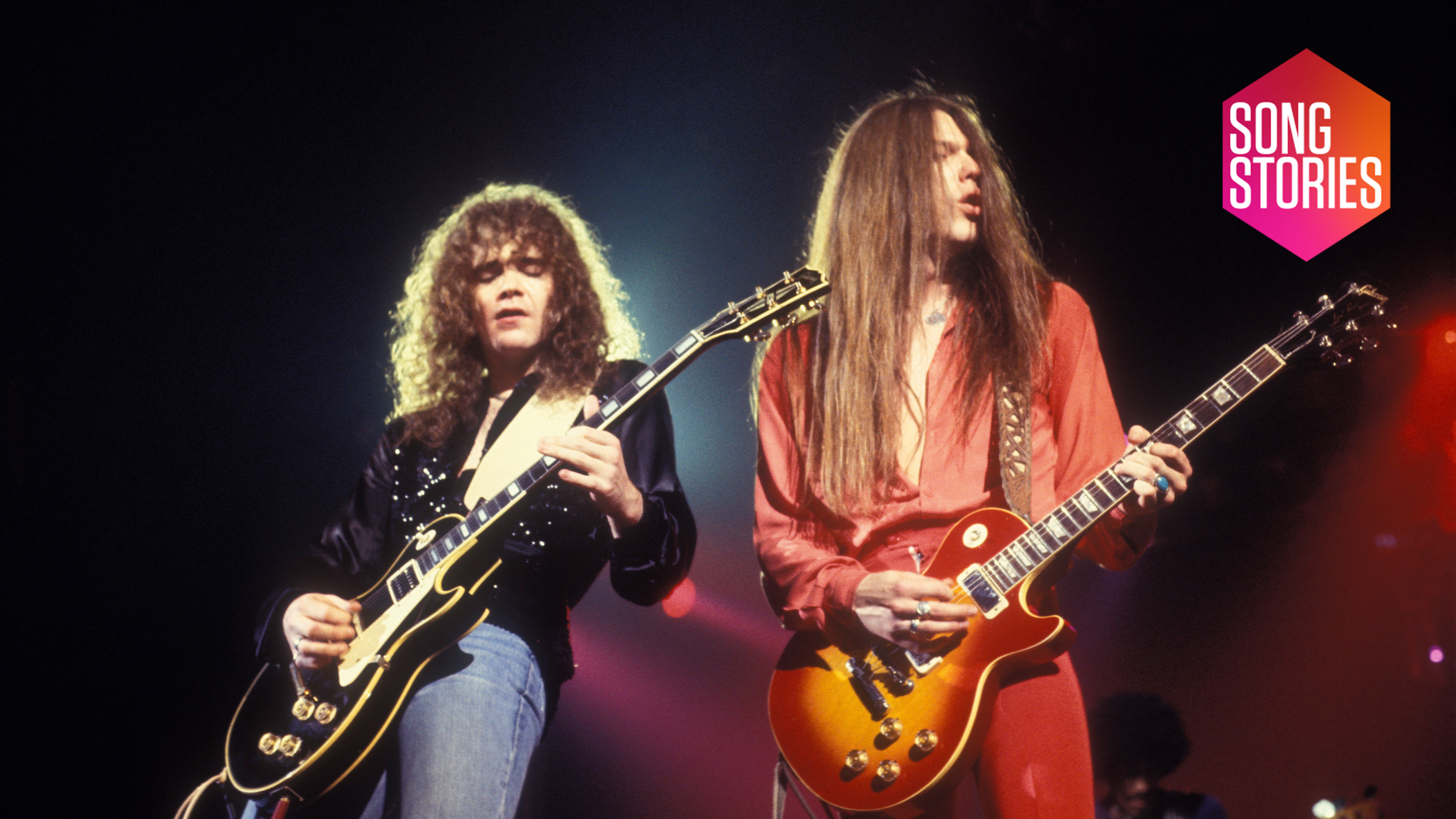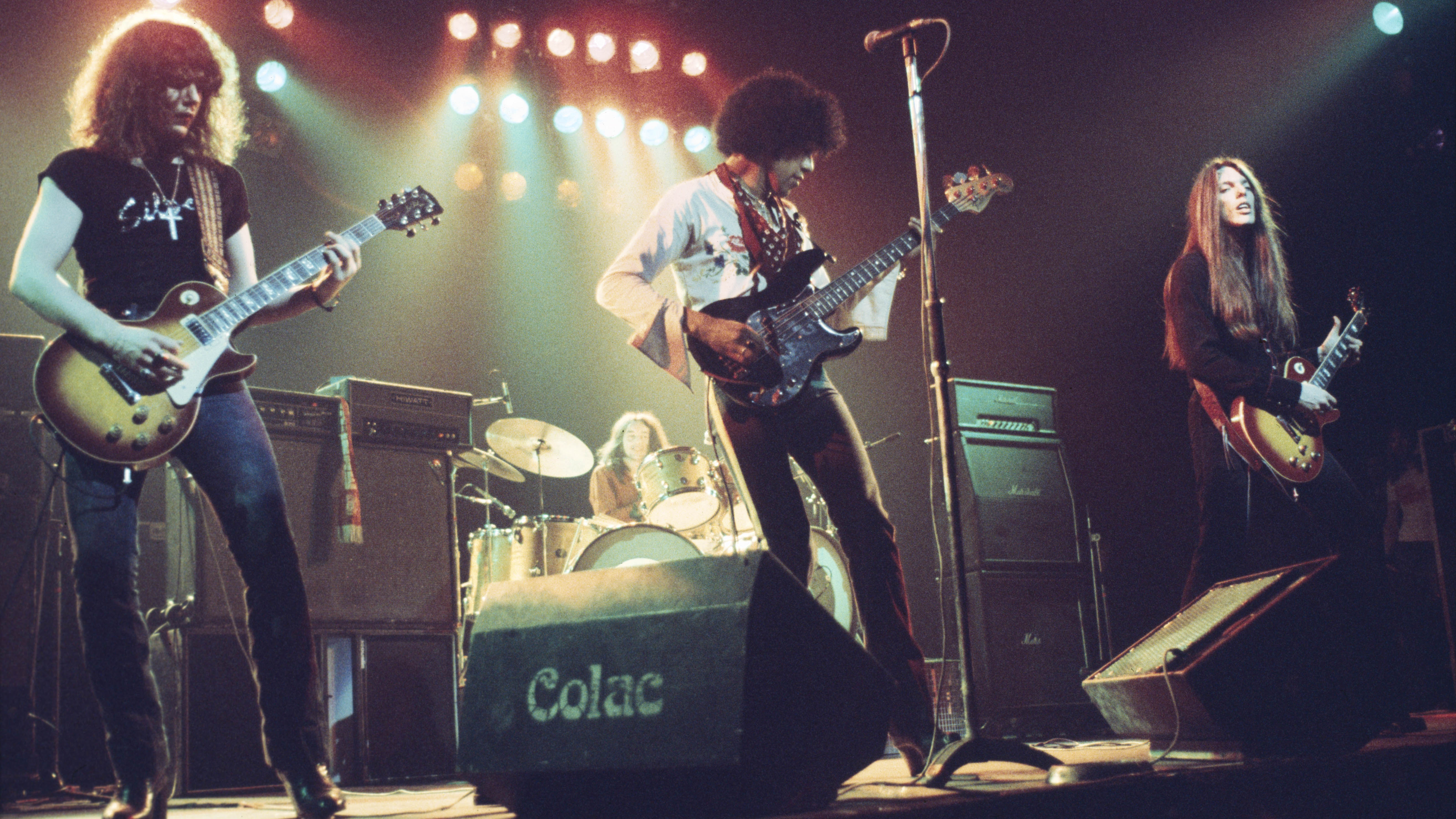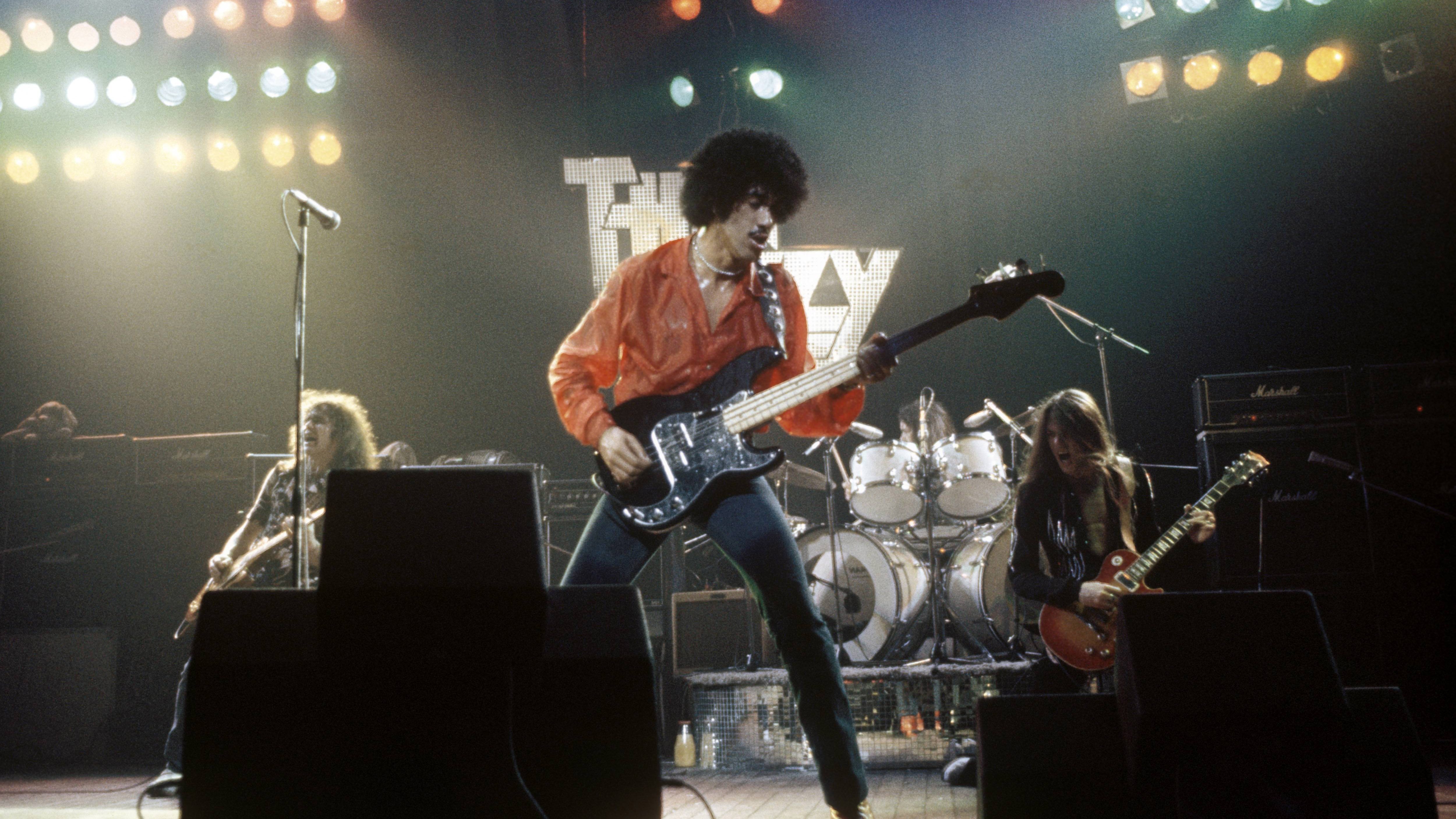“I remember I was at an awards ceremony and I actually heard Tony Iommi say it was his favourite riff ever" – Scott Gorham and Brian Robertson tell the story of Thin Lizzy's Jailbreak
“Jailbreak was actually going to be the beginning of the concept album”

As far as the up, down, turbulent and tragically brilliant world of Thin Lizzy is concerned, the sci-fi tinged 1976 axe anthem Jailbreak has played a pretty memorable part. Not only did the song kick off the hard rockers’ sixth long-player of the same name – the record that finally broke the then one-hit wonders into the big time – it also opened the majestic and multi-million selling double live album, Live And Dangerous, released in 1978.
And for the late-70s’ Lizzy-loving hordes, Jailbreak was also the song they’d most likely hear first as their idols stormed onto the stage and ripped into gear. “It has that big crashing E chord right at the top,” Scott Gorham told Total Guitar in 2011. “And I think it just made it a natural to start the sets off with… Everyone identifies with the riff.”
Both Gorham and his Jailbreak-era Lizzy guitar partner, Brian Robertson, remember Phil Lynott coming up with the original riff, although there is a slight difference of opinion about whether the big man wrote the hook line on a bass or an acoustic.
“It was one of those things where Phil brought the basic idea to us on the acoustic,” Robertson rememberd with Total Guitar. “And then we worked it out a bit at soundchecks, which we tended to do quite a lot. And it was originally called something else like a lot of the stuff was.”

“When [Phil] had an idea, it was usually as a bassline and then it was up to ourselves to embellish the bassline,” recalled Gorham. “And really all he had for that one was the riff: ‘Da da dada, dada dada.’ He also had a melody line over that bit, the actual verse… But, after that, he didn’t really have any idea where to go.”
As was often the case with Thin Lizzy songs of that era, it was then up to the band’s twin guitar gods to dig deep into the guitar arrangements.
“That’s when me and Brian jumped onto it and said, ‘Let’s go up to the B, hit the E again, hit the B again and we’ll use that as the chorus’,” said Gorham. “And then the middle section, Phil had come up with that, but it was only on the E section and that’s when we decided: ‘Well, let’s go to the A, back to the E, then we’ll just keep climbing up, climbing up, climbing up until it comes to a natural end with a harmony note.’ It did seem like a natural progression.”
Get the MusicRadar Newsletter
Want all the hottest music and gear news, reviews, deals, features and more, direct to your inbox? Sign up here.
“Rather than use all the strings, I played the bottom three riff-type strings, as I usually did,” Robertson added. “And Scott would play more of the rhythm. A lot of the riff parts came from Scott and I.”
The rest of the songs just didn’t cater to any sort of concept deal at all, but that’s why you see the alien guy on the cover, because he’s the alien overlord and there’s us escaping the jail
The lyrics penned for Jailbreak were part of a wider musical vision. Phil Lynott wanted Lizzy’s sixth album to be a sci-fi rock opera but, as the guys wrote more and more differing material, Phil’s concept ideals began to be watered down.
“Jailbreak was actually [going to be] the beginning of the concept album,” explained Gorham. “It was all about alien beings and overlords and all this kind of deal, but we just didn’t care! The rest of the songs just didn’t cater to any sort of concept deal at all, but that’s why you see the alien guy on the cover, because he’s the alien overlord and there’s us escaping the jail… And if you read the liner notes, you’ll see Phil started to write this as a whole concept thing but, like I say, it didn’t last very long.”

While the concept may have crumbled, the recording process was solid. The Jailbreak album was laid down in just a few weeks at The Who’s own Ramport Studio in Battersea, South London with John Alcock occupying the producer’s chair. Neither Scott nor Brian can remember too much about the song’s core rhythm track recording session. “The recordings were done pretty intensely,” said Robertson. “You didn’t have time to faff around too much either: you just wrote the stuff, rehearsed it then went in and put it down.”
The sweet little lead licks and wah-wah motifs that weave in and out of the title track are a result of Brian Robertson’s favoured approach to the art of overdubbing as well as his silky killer fret skills.
“That’s me fiddling around, as I love to do,” laughed Brian. “In the studio, I tend to go, ‘Right, well, just run me the track from the top and into the solo,’ and I’ll take six tracks off the end of the desk and just play top to bottom, and then pick the bits I like and get rid of the other ones. Once Phil had done his guide vocal, we knew where all the gaps were, so I picked the right places for the little nuances.”
Gear-wise, Brian was lashing out on his ’73 Les Paul Deluxe (with vintage PAF pickups, as custom-fitted by Robertson himself), while Scott kept rhythm on his own mini-humbucker-packed Deluxe. Marshall amps were de rigeur for Lizzy by ’76 and the wah-wah Brian played on Jailbreak was his trusty Colorsound.
While Jailbreak undoubtedly holds a special place in the hearts of many a heavy rocker, one commendation in particular sticks out for Scott Gorham and understandably so.
“I remember I was at an awards ceremony at some point,” Scott fondly recalls. “And I actually heard Tony Iommi say [Jailbreak] was his favourite riff ever. I thought that was pretty cool – thanks Tone!”









